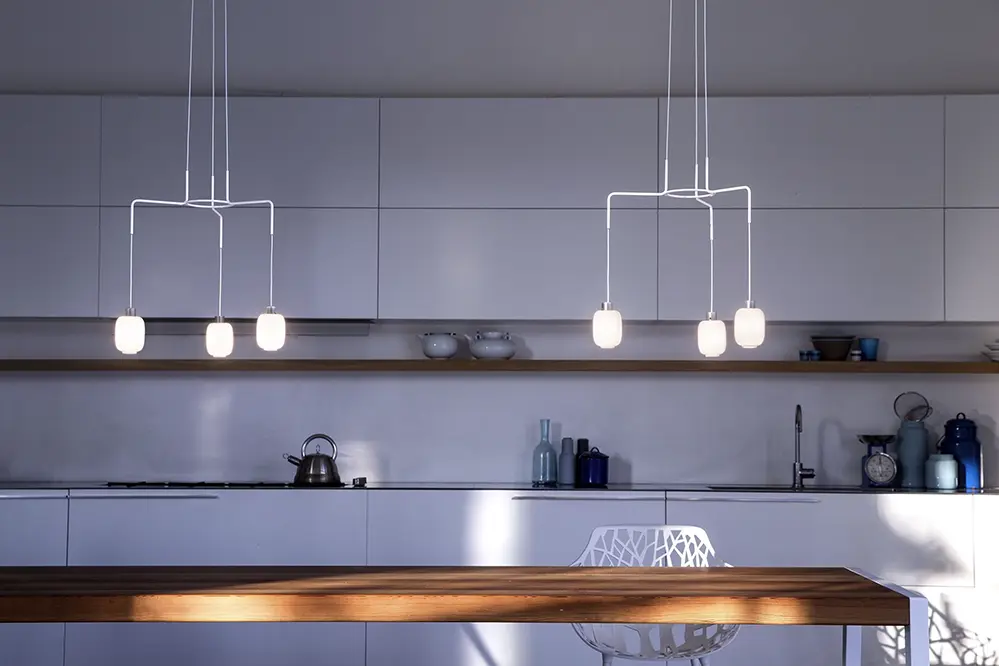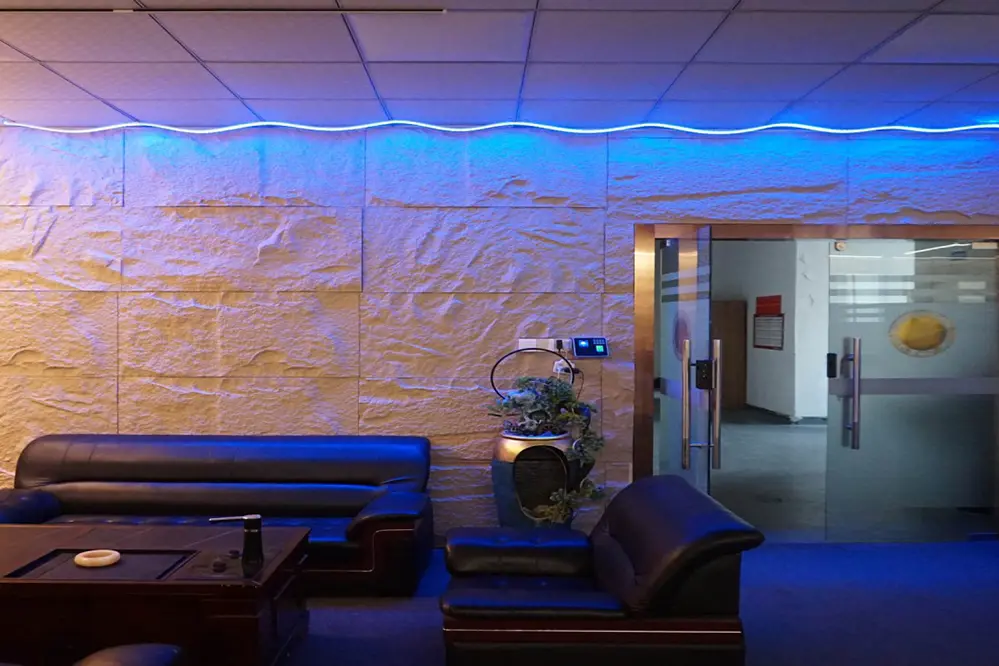What if the key to transforming a city’s skyline lies not in new constructions, but in the artful application of facade lighting? This definitive guide to architectural illumination explores how strategic lighting can redefine urban landscapes, turning ordinary buildings into extraordinary landmarks. Facade lighting is not just about aesthetics; it is a powerful tool that can alter perceptions and experiences.
Despite its potential, facade lighting is often misunderstood or underutilized. Many assume it is solely for decorative purposes or that it requires exorbitant budgets and complex installations. However, these misconceptions can prevent architects and city planners from leveraging its full potential. Understanding the true capabilities of facade lighting is essential for harnessing its benefits.
The significance of facade lighting extends beyond mere beautification. It enhances safety by illuminating pathways, reduces energy consumption through smart technologies, and fosters community pride by highlighting cultural landmarks. These benefits make facade lighting an indispensable element in modern urban planning.
In this guide, we will cover key aspects such as design principles, technological advancements, and case studies of successful implementations. By the end, you will have a comprehensive understanding of how to effectively utilize facade lighting to achieve your architectural goals.
Prepare to embark on a journey that will illuminate your perspective on architectural design. Dive into this guide and discover how facade lighting can transform not just buildings, but entire communities.
Understanding Facade Lighting
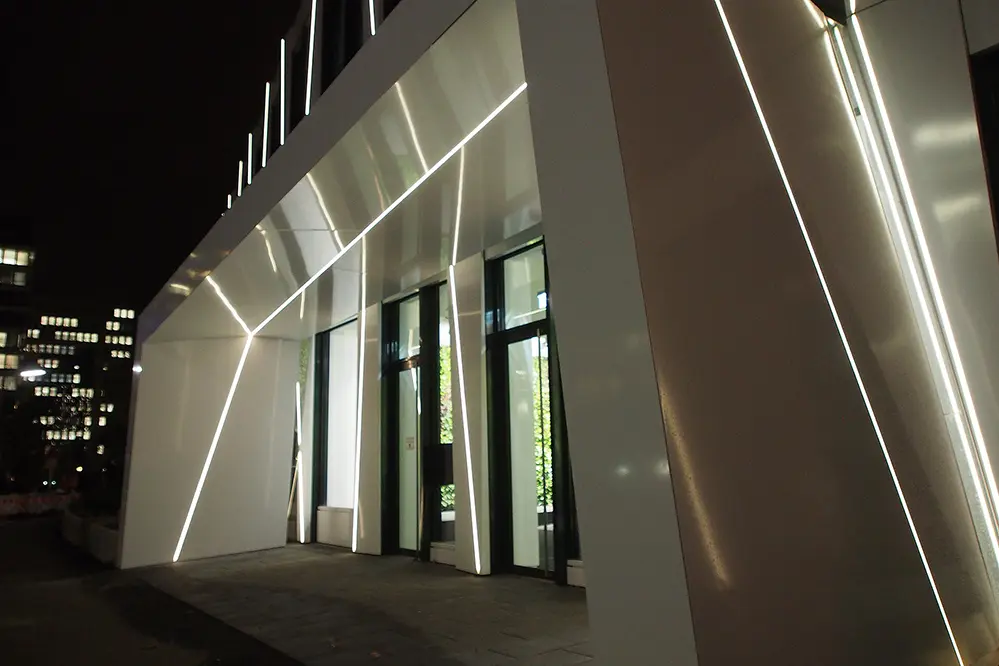
Facade lighting, in its most fundamental form, transforms a building’s exterior into a nighttime masterpiece.
At its core, facade lighting serves as a complementary feature alongside the building’s architecture, crafting a harmonious interplay between light and structure. This marriage of elements not only accentuates specific architectural features but also fosters safe and welcoming environments, making once-overlooked facades dynamic visual experiences. From intricate, textured lighting designs to dramatic spotlight accents, building facades become bright beacons amidst the urban backdrop.
Generally, there are different techniques applied in facade lighting to evoke various feelings. By employing deliberate illumination strategies, architects and designers breathe life into the structural artistry that unfolds when daylight fades and artificial lighting takes center stage.
Furthermore, as facade illumination with LED lights outlets creativity, it simultaneously acknowledges energy efficiency and sustainability. Designers draw from the latest innovations like LEDs and smart control systems, allowing visions to come to life while adhering to responsible energy consumption. These advancements underscore our commitment to future generations, ensuring that our cities thrive under the glow of literacy, inspired aesthetics, and ecological mindfulness.
Importance of Architectural Illumination
Architectural illumination plays a pivotal role in transforming the mundane into masterpieces that captivate, inspire, and invigorate the urban landscape.
Consider the way light accentuates textures and shapes, revealing dimensions unseen during daylight.
When thoughtfully applied, facade lighting not only enhances visual appeal but serves as a beacon of architectural excellence that defines city identities, invigorates cultural discourse, and amplifies a building’s stature and significance.
Architectural illumination not only celebrates heritage but also stands at the forefront of urban improvement—ushering in sustainable solutions with significant architectural impact that intelligently manage energy use. By implementing these forward-thinking practices, and adhering to relevant regulations, cities are empowered to become radiant frameworks of innovation, where history, ambition, and progress converge harmoniously under the embrace of transformative lighting design.
Key Concepts in Facade Lighting
Facade lighting intricately blends creativity with precision, shaping the evening skyline in resplendent elegance. Through deliberate use of illumination, designers emphasize architectural nuances, crafting visual narratives that evoke a building’s essence long after dusk. Thoughtfully orchestrated lighting emphasizes sustainability by minimizing energy consumption while maximizing storytelling potential, ensuring an enduring and inspiring urban tapestry.
Types of Facade Lighting
Facade lighting options are vast—each offering its own unique benefits for enhancing the aesthetic appeal and functionality of architectural structures.
Dynamic lighting can transform static buildings into living, artful portrayals, serving as canvases for inspiration and creativity.
Static lighting creates a consistent illumination effect, highlighting the architectural lines and details of a building. It is an ideal choice for historical structures, where stability and tradition are prioritized over variability.
Conversely, dynamic lighting breathes life into the facade, offering a playground for colors and motions that can change with events or seasons, elevating the edifice’s presence.
Light Sources and Technologies
LEDs lead the modern facade lighting revolution.
The remarkable efficiency of LEDs and their vibrant versatility make them a favored selection in facade lighting the definitive guide. They offer a palette that ranges from soft hues to sharp, dynamic colors, empowering architects to paint with light. Additionally, the longevity of LEDs contributes to sustainability by reducing maintenance costs and energy consumption.
The selection of light sources profoundly impacts design outcomes.
LEDs are supremely adaptable and allow precision in control—a feature that is particularly significant in architectural lighting. This flexibility is key when crafting complex lighting scenes that respond to environmental and social contexts.
Harnessing innovative technologies like smart controls, sensors, and IoT integration can further amplify the expressive capabilities of facade lighting. These advancements position lighting as a dynamic participant in the urban landscape, enhancing engagement and responsiveness. Through embracing new technologies, the future of facade lighting promises an era where creativity and sustainability walk hand in hand.
Benefits of Proper Facade Lighting
Illuminate your architectural vision with precision.
Proper facade lighting does more than just brighten. It serves to highlight the unique character and security of architectural structures, giving them an alluring presence after dusk. Furthermore, it enhances safety by guiding pedestrians and emphasizing building entrances, creating a more inviting atmosphere.
Facade lighting dramatically elevates aesthetic appeal.
This form of illumination is essential—it not only transforms a building’s appearance at night, enhancing the facade’s intricate features, but also supports branding efforts through after-hours visibility.
Moreover, effective lighting solutions offer economic advantages by extending operational hours, attracting more visitors, and enhancing the overall value perception. With technologies from 2023 paving the way, intelligent lighting designs that seem sustainable and vibrant are increasingly attainable, allowing buildings to become landmarks in their urban settings.
Facade Lighting Design Principles
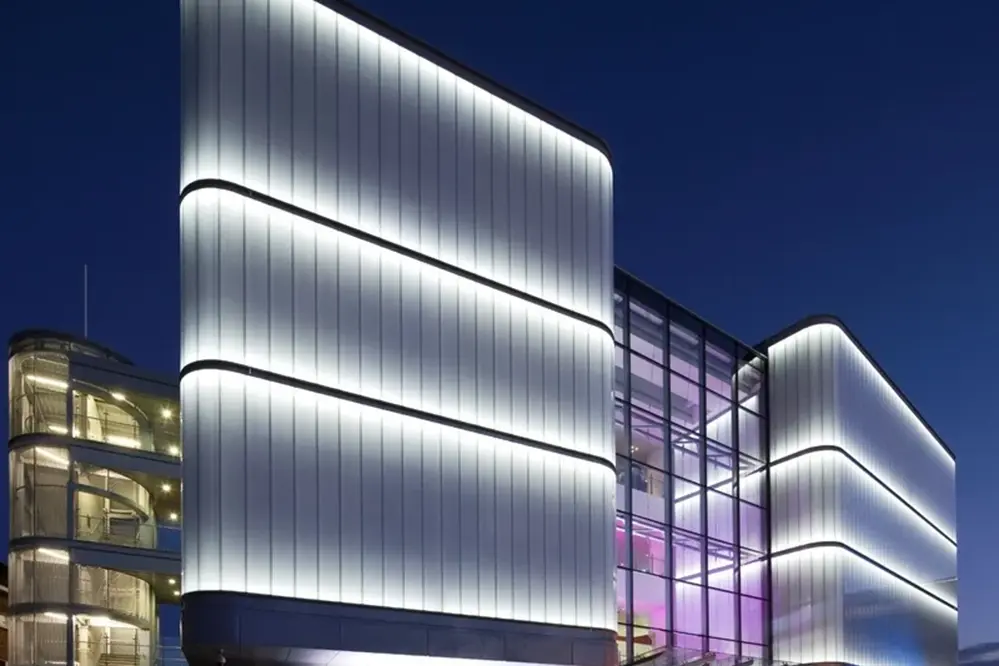
In the realm of architectural illumination, facade lighting design principles serve as the blueprint for lighting that is both inspirational and functional. It is crucial to consider the aesthetic, energy-efficiency, and eco-sensitivity as core elements of successful implementation, ensuring that each project is not only visually stunning but also environmentally responsible.
Thoughtfully crafted designs balance creativity with technical precision, seamlessly integrating light with architecture to evoke emotion and enhance experience.
Aesthetic Considerations
Aesthetic considerations in facade lighting involve the thoughtful integration of light to enhance architectural beauty and ambience.
- Balance: Achieve harmony between light intensity, colors, and architectural features.
- Context: Consider the building’s historical, cultural, and environmental surroundings.
- Creativity: Use innovative lighting techniques to highlight unique architectural elements.
- Consistency: Maintain a cohesive lighting theme that complements the overall building design.
- Sustainability: Integrate eco-friendly installations that reflect contemporary values.
These elements inspire designers to craft illuminations that resonate deeply with onlookers.
Through artistic lighting, buildings transcend mere structures to become beacons of aesthetic allure.
Energy Efficiency
Energy efficiency in facade lighting is crucial to sustainable architectural practices, offering both environmental and economic benefits while enhancing aesthetic appeal.
- LED Technology: Transition to LEDs for their lower energy consumption and longer lifespan.
- Lighting Controls: Implement smart systems to dynamically adjust lighting based on usage and time of day.
- Light Pollution Reduction: Design illumination plans that minimize upward light spillage.
- Efficient Design: Use precision optics to direct light exactly where it is needed, reducing waste.
By focusing on energy efficiency, architects can dramatically reduce the carbon footprint of their projects.
This approach ensures facade lighting that is both brilliant and responsible, balancing beauty with forward-thinking sustainability.
Choosing the Right Lighting Fixtures
Selecting the ideal fixtures determines the success of your facade lighting, ensuring that your building exudes elegance and function.
When choosing, the first consideration should be a fixture’s aesthetic ability to enhance architecture, without overshadowing its features. Fixtures must complement architectural style, whether modern minimalism or classic grandeur, devising visual narratives that resonate distinctly. This harmony not only enhances architectural aesthetics but also aligns practicality with enduring elegance, opening a vista of innovation.
Furthermore, think about the durability of the fixtures in local climates. In coastal areas, for example, ensure that your fixtures are resistant to salt air that may cause corrosion, extending the facade’s immaculate appearance.
Finally, prioritize technological options such as adjustable fixtures with smart controls to enhance energy efficiency. These allow one to tailor brightness levels and light patterns, aligning illumination with the ever-changing palette of cityscapes. These considered choices fuel the convergence of artistic vision and technological prowess, establishing a landmark that not only captivates but also remains vibrant and economically sustainable.
Common Mistakes in Facade Lighting
Facade lighting, though transformative, can falter if common mistakes overshadow its potential to enhance architectural beauty.
Improper fixture placement often leads to unsightly shadows distorting the building’s appeal.
Ignoring the significance of local environmental conditions can result in a failure of lighting systems, adding risk of corrosion or inefficiency within varied weather patterns. Inadequate planning can misalign intended focus and highlight irrelevant areas, thus diluting the visual impact.
Moreover, neglecting to incorporate adaptable technologies is a pitfall that can undermine a project’s longevity and cost-effectiveness. By dismissing smart lighting controls, one forfeits the ability to adapt illumination in response to environmental changes and cultural events. To avoid such pitfalls, embrace the mantra of “plan, evaluate, and innovate” to unlock facade lighting’s full expressive power.
Innovations in Facade Lighting Technology
Today’s facade lighting landscape, a beacon of architectural innovation, shines with promise. In recent years, advanced technologies, such as dynamic LED systems and color-changing capabilities, have emerged, offering a new dimension of creative expression for designers and architects alike. With these innovations, buildings transcend their static existence, transforming the urban nightscape into a vibrant tapestry of colors and forms.
From integrating advanced AI controls to IoT-connectivity, the forefront of facade lighting is defined by “intelligent light”. This is not just a matter of aesthetics but a reflection of a sustainable future, where energy consumption is minimized without compromising brilliance. As we look ahead, the potential of smart facades to interact with the urban environment promises to redefine the architectural canvas, making our cities not only visually captivating but also symbiotically smart.
Sustainable Lighting Solutions
Sustainable facade lighting solutions are revolutionizing architectural illumination by seamlessly balancing aesthetic allure with environmental stewardship, ensuring our urban spaces not only dazzle but also nurture the planet.
Harnessing the power of renewable energy sources complements this lighting revolution.
LED technology is instrumental in advancing sustainable facade illumination, offering an array of options with a fraction of the energy consumption associated with traditional methods, ultimately prolonging the life of installations and mitigating waste.
These sustainable advancements encourage the use of solar panels to power facade lighting systems, and with the smart integration of sensors, lighting can automatically adjust to ambient conditions. This ensures the illumination provided is precisely and efficiently applied, eliminating unnecessary energy use. Together, these developments herald a “green” transformation in architectural lighting, merging cutting-edge technology with environmental mindfulness.
Integration with Smart Systems
Integrating with smart systems is paramount.
In today’s digital age, facade lighting transcends mere illumination. The true magic unfolds as these systems become intelligent actors in architectural design, shifting not solely on their own but in response to surrounding stimuli. This dynamic allows for the optimization of lighting tones and intensities in real-time.
Smart systems bring unmatched customization to facade lighting.
Integration with smart lighting can – at the touch of a button or automatically via sensor inputs – transform structures into living, breathing showcases that reflect the rhythm of their environment, exuding sophistication and contemporary elegance.
Incorporating advanced smart systems into facade lighting ensures that the luminous manifestations adapt, innovate, and lead rather than merely follow. This vibrant synergy of intelligent illumination not only exemplifies the progress of 2023 but also stands as a testament to the dynamic state of architectural adornment. These systems optimize energy use while unlocking novel creative dimensions, heralding a future where light and intelligence dance in harmonious unity.
Case Studies of Facade Lighting
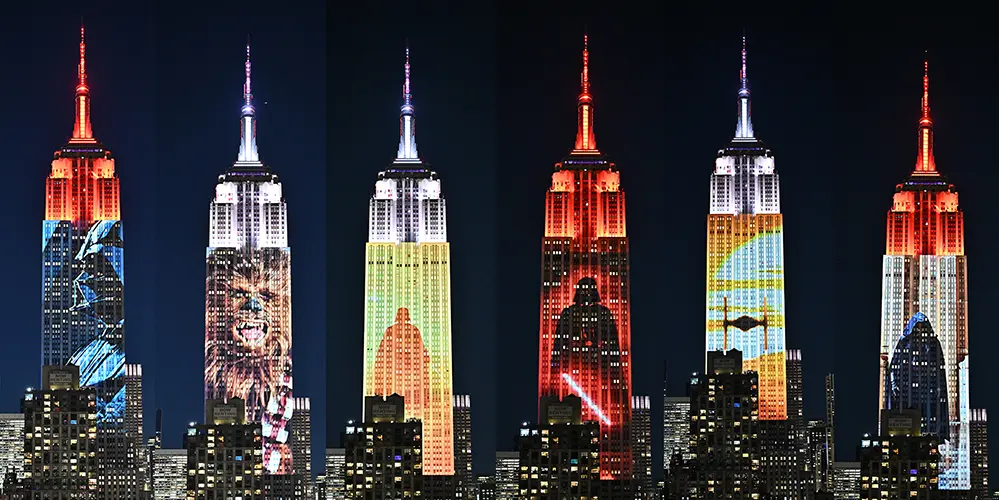
In the bustling metropolis of New York City, the Empire State Building stands as an iconic beacon, radiating elegance through its masterful use of facade lighting. This renowned skyscraper hosts a dynamic lighting system that changes color to mark special events and holidays.
Transformative lighting displays are utilized to reflect the building’s cultural significance.
Another sterling example is the Sydney Opera House, where lighting artistry (employing projection mapping techniques) adorns its shell-like structures. These light installations make use of interactive technologies for spectacular presentations.
Intricate visuals have vividly animated the edifice’s luminous face, capturing global attention. Their advanced lighting controls have enabled nightly beauty and a profound connection between the opera house and the city it serves.
Finally, take the case of Dubai’s Burj Khalifa, whose facade lighting is a marvel of technological mastery. The skyscraper’s lighting can be tailored to support global causes, celebrating events with an uplifting message of unity and cooperation.
Together, these cases illuminate that facade lighting is not merely decorative. Smart design choices foster cultural connection, amplify architectural forms, and inspire observers worldwide.
Facade Lighting Trends
In recent years, facade lighting has undergone a remarkable evolution, reflecting a dynamic fusion of cutting-edge technology with architectural innovation. Designers have harnessed the power of LED technology, unleashing a revolutionary impact on facade lighting.
Adaptive lighting systems ensure that the aesthetic expression of structures shifts with the environment, optimizing energy consumption.
Furthermore, augmented reality has become the avant-garde in facade design, infusing new dimensions of interactivity and engagement. These innovations transform urban landscapes into immersive experiences, offering both artful illumination and environmental sustainability.
Imagine smart buildings that communicate through illuminated facades, relaying real-time data, enhancing public engagement, promoting sustainability, and encouraging communal interaction. Such advancements push us closer to realizing truly responsive architectural environments.
Urban areas worldwide increasingly prioritize facade lighting that not only highlights architectural beauty but also nurtures well-being. The rise of biophilic design principles in lighting reflects an inspiring commitment to harmony between built and natural environments.
Ultimately, the future of facade lighting lies in its capacity to transcend traditional boundaries. As designers, we are tasked with innovating solutions that are as responsible as they are revolutionary.
Tips for Effective Facade Lighting Design
To achieve a dazzling facade lighting design, consider balance, color harmony, and strategic placement to create a cohesive visual narrative that enhances architectural features.
Prioritize energy-efficient solutions to reduce environmental impact and utility expenses.
Select lighting fixtures that complement the building’s aesthetics, ensuring they enhance (rather than overshadow) architectural strengths.
Layered lighting helps in creating dynamic visual experiences by combining ambient, accent, and feature lighting.
Remember, the aim is not merely to illuminate but to evoke emotions and tell the building’s story, projecting its architectural essence beyond mere visibility.
Innovate, and step into the future where light’s power to transform is boundless. Combined thoughtfully, lighting concepts become both a sustainable and soul-stirring art form.
Conclusion
Facade lighting represents a dynamic intersection of architecture and artistry, transforming buildings into compelling visual narratives that captivate and engage. This guide underscores the critical role of facade lighting not merely as an aesthetic enhancement but as a vital component of sustainable urban design. By carefully selecting hues and shadows, designers can craft spaces that invite interaction and admiration, while also promoting environmental consciousness. Facade lighting shapes perceptions and cultivates atmospheres, breathing new life into structures and elevating them to iconic status. This approach ensures that architectural designs are not only visually stunning but also harmoniously balanced with their surroundings.
As we delve into the exciting possibilities and emerging technologies within this field, the potential for bold innovation and meaningful impact becomes increasingly apparent. Facade lighting offers designers the opportunity to create luminous masterpieces that contribute to a brighter, more sustainable world. By prioritizing harmony and balance, designers can craft spaces that are as emotionally evocative as they are environmentally conscious, enhancing the human experience. This guide invites you to explore the transformative power of facade lighting, encouraging you to forge ahead with confidence and creativity, transforming architectural landscapes into radiant canvases that inspire and captivate.


